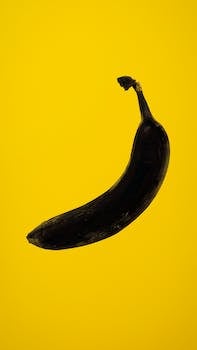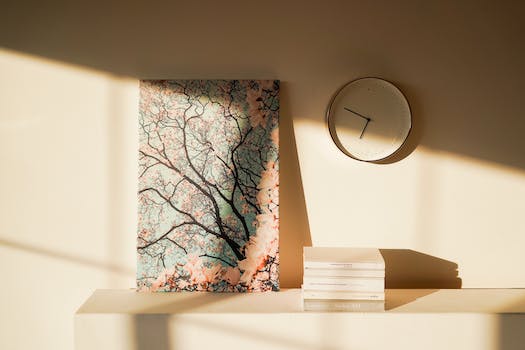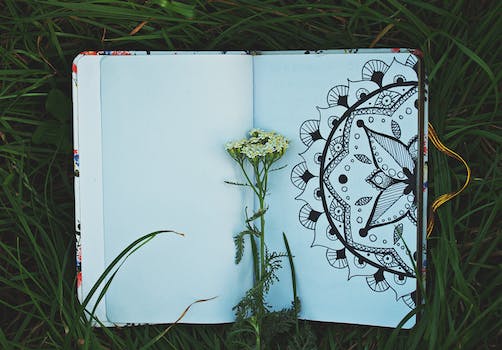

-
Table of Contents
Redefining creativity, one brushstroke at a time.
Introduction
Introduction: Challenging the Notion of Bad Art
The concept of "bad art" has long been a subject of debate and contention within the art world. While some artworks are widely celebrated and revered, others are often dismissed as lacking skill, creativity, or aesthetic value. However, challenging the notion of bad art involves questioning the subjective nature of artistic judgment and exploring the diverse perspectives and intentions behind creative expressions. By examining the underlying assumptions and biases that inform our understanding of art, we can open up new possibilities for appreciating and reevaluating what is traditionally considered "bad art."
The Subjectivity of Art: Exploring the Perception of Bad Art
Art has always been a subject of great debate and discussion. What one person considers a masterpiece, another may dismiss as bad art. The perception of art is highly subjective, and what may be considered bad art to one person may be seen as a work of genius to another. In this article, we will explore the notion of bad art and challenge the idea that it can be objectively defined.
One of the main reasons why art is subjective is because it is deeply rooted in personal experiences and emotions. Each individual brings their own unique perspective to a piece of art, influenced by their background, culture, and personal preferences. What may resonate with one person may not have the same effect on another. Therefore, it is impossible to establish a universal standard for what constitutes bad art.
Furthermore, the concept of bad art is often based on societal norms and expectations. Throughout history, certain styles and techniques have been deemed as superior, while others have been dismissed as inferior or lacking in skill. However, these judgments are often influenced by the prevailing tastes and trends of a particular time period. What may have been considered bad art in the past may be celebrated as groundbreaking and innovative today.
Another factor that contributes to the subjectivity of art is the intention of the artist. Art is a form of self-expression, and artists create with a specific purpose in mind. Some artists may intentionally challenge traditional notions of beauty and aesthetics, pushing boundaries and provoking thought. Their work may be intentionally provocative or controversial, aiming to elicit a strong emotional response from the viewer. While some may view this as bad art, others may appreciate the artist's intention and the impact it has on their own perception of the world.
It is also important to consider the role of context in the perception of art. A piece of art may be created for a specific purpose or within a particular cultural or historical context. Without understanding the context in which a work of art was created, it is difficult to fully appreciate its significance. What may appear as bad art when viewed in isolation may take on a completely different meaning when considered within its intended context.
In conclusion, the notion of bad art is highly subjective and cannot be objectively defined. Art is deeply personal and influenced by individual experiences, societal norms, artist intention, and contextual factors. What one person may consider bad art, another may see as a masterpiece. Instead of dismissing art as good or bad, it is more productive to engage in open-minded discussions and appreciate the diversity of artistic expression. By challenging our preconceived notions and embracing the subjectivity of art, we can foster a greater understanding and appreciation for the rich tapestry of human creativity.
Redefining Artistic Standards: Challenging the Notion of Good and Bad Art

Art has always been a subjective field, with individuals having their own unique tastes and preferences. However, there has been a long-standing notion in the art world that some works are simply "bad art." These works are often dismissed as lacking skill, creativity, or originality. But is it fair to label art as "bad" based on these criteria alone? In recent years, there has been a growing movement to challenge this notion and redefine artistic standards.
One of the main arguments against the idea of "bad art" is that it is inherently subjective. What one person may consider to be a masterpiece, another may see as mediocre or even terrible. This subjectivity is what makes art so fascinating and diverse. It allows for a wide range of styles, techniques, and interpretations. By labeling certain works as "bad art," we limit the possibilities and discourage experimentation and innovation.
Another argument against the notion of "bad art" is that it fails to consider the context in which the work was created. Art is often a reflection of the time, place, and culture in which it is produced. What may seem unimpressive or unoriginal to us now may have been groundbreaking and revolutionary when it was first created. By dismissing these works as "bad art," we overlook their historical and cultural significance.
Furthermore, the idea of "bad art" often stems from a narrow definition of what constitutes "good art." Traditional artistic standards prioritize technical skill, realism, and adherence to established conventions. However, this definition excludes many forms of art that may not fit into these categories but still have value and meaning. By challenging these standards, we open up the art world to a wider range of voices and perspectives.
One example of this is the rise of street art and graffiti. These forms of art were once considered vandalism and were often dismissed as lacking skill or artistic merit. However, in recent years, street art has gained recognition and respect as a legitimate art form. Artists like Banksy have challenged traditional notions of what art should be and have brought attention to social and political issues through their work. By redefining artistic standards, we can appreciate the creativity and impact of these unconventional forms of art.
It is also important to consider the role of personal expression in art. Art is often a way for individuals to express their thoughts, emotions, and experiences. By labeling certain works as "bad art," we undermine the importance of this personal expression. What may be considered "bad" by some may be deeply meaningful and significant to the artist. By challenging the notion of "bad art," we can encourage artists to explore their own unique voices and perspectives.
In conclusion, the notion of "bad art" is a subjective and limiting concept that fails to consider the diversity and complexity of the art world. By challenging this notion, we can redefine artistic standards and open up the field to a wider range of styles, techniques, and perspectives. Art should be celebrated for its ability to provoke thought, evoke emotions, and challenge our preconceived notions. Let us embrace the diversity of art and appreciate the value and meaning it brings to our lives.
Embracing Unconventional Art: Breaking Boundaries and Challenging Traditional Notions of Beauty
Challenging the Notion of Bad Art
In the world of art, there has always been a prevailing notion of what constitutes "good" or "bad" art. This notion is often based on traditional standards of beauty and technical skill. However, in recent years, there has been a growing movement to challenge these notions and embrace unconventional art that breaks boundaries and defies traditional expectations.
One of the key arguments against the notion of bad art is that it is subjective. What one person may consider to be a masterpiece, another may see as a complete failure. This subjectivity is what makes art so fascinating and diverse. It allows for a wide range of interpretations and perspectives, and it encourages artists to push the boundaries of what is considered acceptable or "good."
Another argument against the notion of bad art is that it stifles creativity and innovation. When artists feel constrained by the fear of creating something that will be deemed "bad," they are less likely to take risks and explore new ideas. This can lead to a stagnation in the art world, where artists are simply reproducing what has already been done, rather than pushing the boundaries and challenging the status quo.
Embracing unconventional art is a way to break free from these constraints and encourage artists to think outside the box. It allows for a greater diversity of artistic expression and opens up new possibilities for creativity. By challenging traditional notions of beauty and technical skill, artists are able to explore new mediums, experiment with different techniques, and create art that is truly unique and thought-provoking.
One example of unconventional art that challenges traditional notions of beauty is abstract art. Abstract art often lacks recognizable subject matter and can be seen as chaotic or confusing to some viewers. However, it is precisely this lack of representation that allows for a deeper exploration of color, form, and emotion. Abstract art invites viewers to engage with the artwork on a more visceral level, encouraging them to interpret and experience the piece in their own unique way.
Performance art is another form of unconventional art that challenges traditional expectations. Performance art often involves live actions or interactions, blurring the lines between art and life. It can be provocative, controversial, and even uncomfortable for some viewers. However, it is precisely this discomfort that allows for a deeper engagement with the artwork and a questioning of societal norms and expectations.
Street art is yet another example of unconventional art that challenges traditional notions of beauty. Often created illegally in public spaces, street art can be seen as vandalism or graffiti by some. However, it is precisely this act of reclaiming public spaces and challenging the authority of traditional art institutions that makes street art so powerful. It allows for a democratization of art, making it accessible to a wider audience and sparking conversations about social and political issues.
In conclusion, embracing unconventional art is a way to break free from the constraints of traditional notions of beauty and technical skill. By challenging these notions, artists are able to push the boundaries of what is considered acceptable or "good" art, and create work that is truly unique and thought-provoking. Whether it is through abstract art, performance art, or street art, embracing unconventional art allows for a greater diversity of artistic expression and encourages viewers to engage with the artwork on a deeper level. So let us challenge the notion of bad art and embrace the beauty and power of the unconventional.
Q&A
1. What does it mean to challenge the notion of bad art?
Challenging the notion of bad art involves questioning traditional standards and judgments of artistic quality, encouraging a more open-minded and inclusive approach to appreciating and evaluating art.
2. Why is it important to challenge the notion of bad art?
Challenging the notion of bad art promotes artistic freedom, creativity, and diversity. It allows for the exploration of unconventional ideas and styles, fostering a more inclusive and dynamic art community.
3. How can challenging the notion of bad art benefit society?
By challenging the notion of bad art, society can encourage innovation, self-expression, and cultural understanding. It opens up opportunities for marginalized artists and helps break down barriers that limit artistic exploration and appreciation.
Conclusion
In conclusion, challenging the notion of bad art is essential in fostering a more inclusive and diverse artistic landscape. By questioning traditional standards and embracing different perspectives, we can appreciate the subjective nature of art and encourage creativity to flourish. Embracing the idea that there is no universally "bad" art allows for a more open-minded approach, enabling artists to explore new boundaries and audiences to engage with a wider range of artistic expressions. Ultimately, challenging the notion of bad art promotes artistic growth, innovation, and a more inclusive artistic community.












